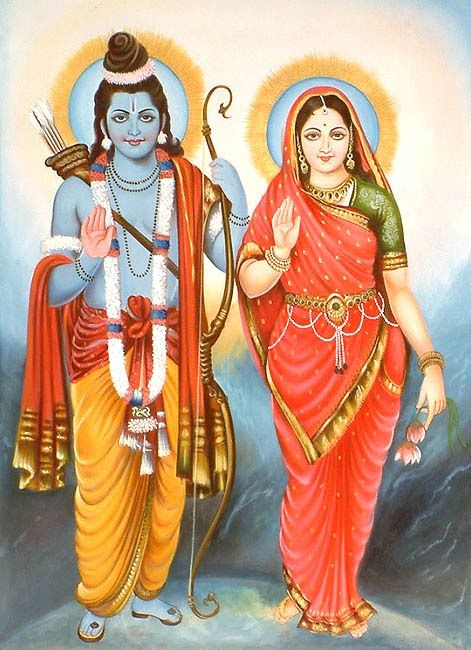Sita The Ideal Wife
Jun 17, 2019 • 58 views
Ramayana, in its many versions, has always been the most influential epic in the South-Asian culture. Ramayana has unquestionably influenced the lives of the Hindu society. It is the story that is known by all the members of this existing community. Inescapable from South-Asian culture, Ramayana is known in many of its versions, though not always in its so proclaimed original Valmiki’s form, but one form or the other. Ramayana, on many levels, portrays the ideas and values of the Hindu culture. It is an epic whose characters are worshipped and idealised — the people in South-Asia look up to Rama and Sita. It has, in many domestic households, set the norms of a perfect husband and wife. It has asked women to be as devotional and loyal to their husbands as Sita was, practising, Pativrata. It has also set the norms of a noble, ideal, patient man — Rama. Indian social norms and mentalities have, to some extent,always being influenced by its epics. Rama and Sita have been used as a form of utopianism in many conversations and phrases in India. No matter how many people have actually read the book, they all know the plot and they all know the virtues of an ideal man and a woman portrayed by Rama and Sita.
Indian wives and women have idealised Sita to such an extent, that she becomes the preacher of Pativrata. Hindu women believe that their foremost duty is to serve their husband, it is their dharma and their lives revolve around this dharma. These women are the idols of fidelity and that is why Hindu women all over the world are identified with it. Their husbands are supposed to protect them and they are supposed to be devotional to their husbands. The Hindu women put their husbands in a such a high position that they are, metaphorically, gods for them. The women in the Hindu culture have always been identified with their male counterparts, they do not promote individualism as they are always linked to their husbands. This is prominent in many epics, Ramayana being one of them.

Pativrata also signifies the idea of purity and chastity linked with the sexuality of women. This dharma was prominent in some of the ancient Hindu practices, one of them being sati. Which could have said to be associated with the horrors of Pativrata, women jumping into the funeral pyre of their husbands. It denied them the right to have a separate life, apart from their married one. Implying, that women were incapable of being independent.
